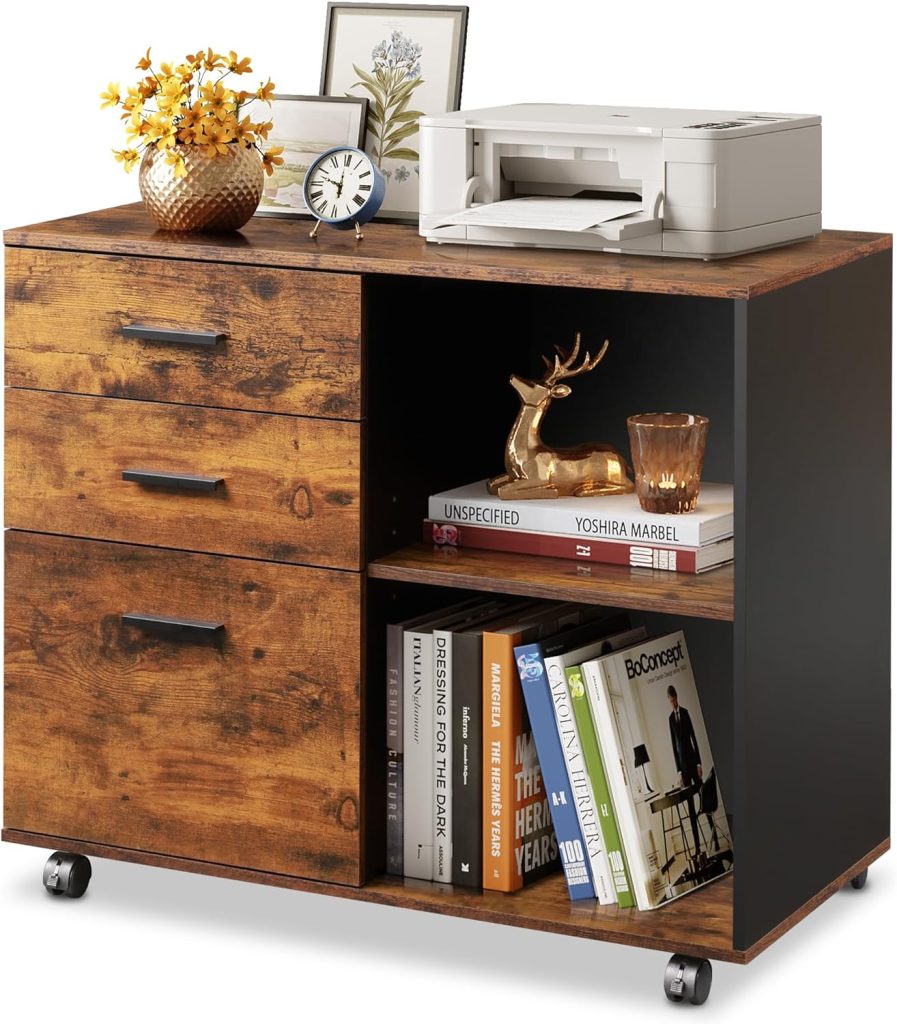
File cabinets are essential office furniture designed to store and organize documents, files, and important papers systematically. They come in various sizes, styles, and materials to fit different office needs and aesthetics. Here are the key features and descriptions of file cabinets.
Key Features of File Cabinets:
- Types:
- Vertical File Cabinets: Tall and narrow, typically with two to five drawers stacked vertically. Ideal for offices with limited floor space.
- Lateral File Cabinets: Wide and shallow, with two to four drawers that extend horizontally. Suitable for high-capacity filing and easy access.
- Mobile File Cabinets: Small, often with wheels for easy movement. Fits under desks or in small spaces, offering flexibility.
- Flat File Cabinets: Designed for storing large documents such as blueprints, maps, and artwork. Features shallow, wide drawers.
- Materials:
- Metal: Durable, secure, and often fire-resistant. Commonly used in professional environments.
- Wood: Offers a more traditional and aesthetic appeal, available in various finishes to match office decor.
- Laminate: Provides the look of wood at a lower cost, with easy maintenance and durability.
- Locking Mechanism:
- Central Locking: A single lock that secures all drawers simultaneously, enhancing security.
- Individual Locks: Separate locks for each drawer, allowing selective access.
- Drawer Configuration:
- Full Extension Drawers: Allows drawers to open fully, providing easy access to the entire contents.
- Half Extension Drawers: Drawers open halfway, suitable for limited space but less accessible.
- Hanging File Drawers: Designed to accommodate hanging file folders, keeping documents organized and easily accessible.
- Capacity and Size:
- Letter Size: Designed to hold standard letter-sized documents (8.5” x 11”).
- Legal Size: Can accommodate legal-sized documents (8.5” x 14”).
- Mixed Size: Some cabinets are adjustable to hold both letter and legal-sized documents.
- Additional Features:
- Anti-Tip Mechanism: Prevents the cabinet from tipping over when multiple drawers are open.
- Fireproofing: Some models offer fire-resistant construction to protect documents from fire damage.
- Labels and Indexing: Label holders or indexing systems to help organize and quickly locate files.
Description:
File cabinets are indispensable for maintaining an organized, efficient, and secure office environment. They provide a dedicated space for storing important documents, ensuring that files are easily accessible and protected.
Types of File Cabinets:
- Vertical File Cabinets:
- Description: Vertical file cabinets are tall and slim, making them ideal for spaces with limited floor area. They usually feature two to five drawers stacked on top of each other.
- Features:
- Space-efficient design.
- Full or half-extension drawers.
- Available in metal or wood finishes.
- Use Case: Best for small offices or areas where floor space is at a premium.
- Lateral File Cabinets:
- Description: Lateral file cabinets are wider and shorter than vertical cabinets, providing easy access to files stored side-by-side.
- Features:
- High capacity storage.
- Full-extension drawers for better accessibility.
- Typically made of metal for durability.
- Use Case: Suitable for larger offices or where extensive filing is required, allowing easy organization and quick retrieval of documents.
- Mobile File Cabinets:
- Description: Mobile file cabinets are compact and often come with wheels, allowing for easy movement around the office.
- Features:
- Portability with caster wheels.
- Fits under desks or in small spaces.
- Usually includes one to three drawers.
- Use Case: Ideal for flexible office layouts and temporary workspaces.
- Description: Flat file cabinets are designed for storing large, flat documents such as architectural plans, maps, and artwork.
- Features:
- Shallow, wide drawers.
- Stackable design for increased capacity.
- Typically made of metal for stability.
- Use Case: Best for design studios, architectural firms, and other environments where large documents need to be stored flat.
Choosing the Right File Cabinet:
When selecting a file cabinet, consider the following:
- Storage Needs: Determine the volume and type of documents you need to store. Choose a cabinet that can accommodate your current and future needs.
- Space Constraints: Measure the available space in your office to ensure the cabinet will fit comfortably.
- Material and Aesthetics: Select a material that matches your office decor and provides the necessary durability.
- Security Requirements: If you need to store sensitive documents, look for cabinets with reliable locking mechanisms and consider fireproof options.
- Mobility: Decide if you need a stationary cabinet or a mobile one that can be moved around the office.
By understanding these features and considerations, you can choose a file cabinet that enhances your office organization, efficiency, and security.







